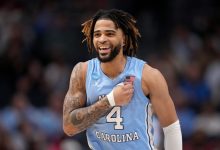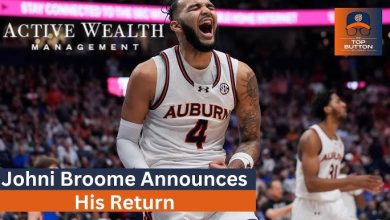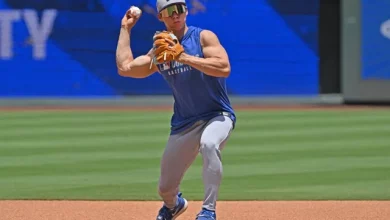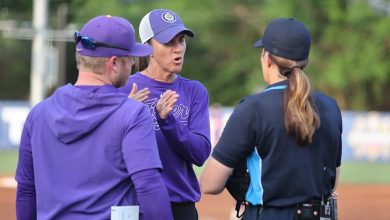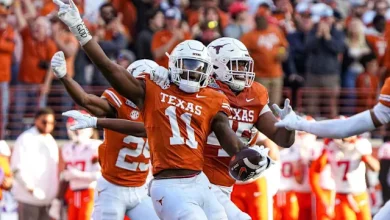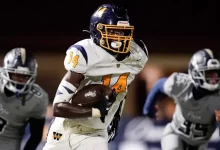Inside the Duke Basketball Empire: Legacy, Rivalries, and What Makes This Blue-Blood Program an Unstoppable Force in College Hoops

There are programs that win championships, and then there are programs that define them. Duke basketball is the latter.
From the moment Mike Krzyzewski took the reins in 1980, Duke University’s basketball program transformed from a respected ACC contender into a full-blown basketball dynasty. Forty-plus years later, the Blue Devils are not just a team—they are a brand, a movement, and, to some, an obsession.
Whether you’re a diehard fan cheering in Cameron Indoor Stadium or a bitter rival who counts down the days to their downfall, one thing remains certain: everyone talks about Duke.
But what makes this program so magnetic—so simultaneously admired and hated? Let’s go inside the empire to understand the obsession: the legacy, the rivalries, and why Duke remains the most polarizing powerhouse in college basketball.
A Legacy Forged in Excellence
Duke basketball’s rise didn’t happen overnight. Before Krzyzewski (Coach K), the program had seen flashes of greatness under coaches like Vic Bubas and Bill Foster, including a Final Four appearance in 1963. But it wasn’t until Coach K arrived from Army West Point that the foundation of the empire was truly laid.
Krzyzewski’s vision was clear: build a program based on discipline, defense, intelligence, and culture. The early years were rocky, and many called for his firing. But Duke held firm. That faith paid off—massively.
From 1986 to 2022, Duke made 13 Final Four appearances, won five NCAA national championships, and claimed 15 ACC tournament titles. Coach K’s 1,202 career wins (including 1,129 at Duke) remain unmatched in men’s Division I history.
Duke didn’t just win games—they won with style. With stars like Christian Laettner, Grant Hill, Shane Battier, J.J. Redick, Kyrie Irving, and Zion Williamson, the program developed a signature: a mix of fundamental excellence and basketball flash.
Duke became the school for elite recruits who wanted to win, learn, and launch themselves into the NBA.
Cameron Indoor: The Cathedral of College Basketball
To understand the Duke obsession, you have to step inside Cameron Indoor Stadium—college basketball’s Mecca.
Built in 1940, the 9,314-seat arena feels more like a theatre than a sports venue. The stands are tight, the acoustics are overwhelming, and the Cameron Crazies—the student section known for coordinated chants, face paint, and unrelenting energy—turn every game into a frenzied experience.
It’s intimidating. It’s loud. It’s sacred.
“There’s no place like Cameron,” said former Blue Devil Grayson Allen. “The energy hits you the moment you walk through the tunnel. You don’t play in Cameron—you survive it.”
Rival teams often say the building feels like it’s breathing down your neck. But for Duke fans, it’s home. Generations of alumni pass down the magic of Cameron like a family heirloom. And when Duke wins there, as they almost always do, it feels like a holy ritual fulfilled.
The Rivalries: Fueling the Fire
No article on Duke is complete without talking about the rivalries, particularly Duke vs. North Carolina—college basketball’s most heated, most iconic matchup.
Separated by just eight miles, Duke and UNC’s feud runs deeper than wins and losses. It’s a cultural divide, a stylistic clash, and often a battle of ideologies. Duke’s private school prestige versus Carolina’s public-school swagger. Blue-blood versus baby blue.
Since 1920, the two programs have faced off over 260 times. But it’s not the quantity that defines the rivalry—it’s the stakes. Final Fours. ACC titles. NBA-caliber matchups. National implications. Every game matters.
One of the rivalry’s most legendary moments came in 2022, when UNC spoiled Coach K’s final game at Cameron and then knocked Duke out of the Final Four in New Orleans. It was heartbreak for Duke fans—euphoria for Tar Heel Nation. And it cemented the rivalry as arguably the greatest in all of sports.
But UNC isn’t the only rival. Over the years, Duke has forged testy relationships with Maryland (in the ACC heyday), Michigan State (in March Madness battles), and Kentucky (in recruiting and tournament showdowns). These rivalries keep Duke in the spotlight and fuel the national narrative year after year.
The Brotherhood: More Than a Slogan
When you hear Duke players talk, you’ll often hear the word “Brotherhood.” It’s not just a marketing slogan—it’s a culture rooted in family, mentorship, and shared purpose.
The Brotherhood connects generations of players, from 1990s stars like Grant Hill to current pros like Jayson Tatum and RJ Barrett. They train together in the offseason, support each other on social media, and return to Durham to mentor incoming players.
It’s part of what makes Duke’s recruiting pitch so strong: come here, and you’re part of something bigger.
“Brotherhood means knowing you’re never alone,” said Tatum. “You’re part of a tradition that stretches across time. It’s not just about one-and-done. It’s about legacy.”
And that legacy carries weight. When a recruit signs with Duke, they’re joining a fraternity of excellence—and a network that extends far beyond basketball.
The Transition to Jon Scheyer: A New Era Begins
When Mike Krzyzewski stepped down in 2022, many wondered if Duke would lose its magic. The torch was passed to Jon Scheyer, a former Blue Devil captain, assistant coach, and national champion.
Scheyer faced impossible expectations. Replacing a living legend is never easy. But in just a few short seasons, Scheyer has shown he’s up to the task. Duke has remained a top-tier program, continued to land five-star recruits, and developed a balanced style of play that merges modern spacing with classic Duke toughness.
Under Scheyer, the team has placed greater emphasis on player-led leadership, positionless basketball, and analytics. He’s young enough to connect with recruits on a personal level and seasoned enough to coach in high-pressure games.
“He’s not Coach K. He’s Coach Scheyer,” said former Blue Devil Jay Williams. “And that’s exactly what Duke needs right now.”
The Duke Brand: Global Impact and Cultural Relevance
Duke basketball is more than just a college program—it’s a global brand.
Their games are broadcast internationally. Jerseys sell across the world. Alumni become NBA stars, media personalities, and even business moguls. Social media content from Duke garners millions of views, and the program’s influence reaches into fashion, music, and pop culture.
Even Duke’s haters help fuel the brand. Whether you love them or hate them, you watch. You comment. You care.
That emotional pull is something few programs have managed to replicate. It’s what makes Duke impossible to ignore.
The Duke Way: Why the Obsession Endures
So, why does the Duke basketball obsession endure?
Because it’s built on excellence. Because it’s shaped by unforgettable players and moments. Because it fuels debate, emotion, and loyalty like no other program in college sports.
It’s a team that brings people together—and tears them apart. It’s an institution that creates storylines, legacies, and legends.
Duke is not perfect. They’ve faced criticism over recruiting, style of play, and public perception. But even that adds to their mystique. The scrutiny, the pressure, the expectation—it only makes Duke stronger.
At the heart of it all is a simple truth: when Duke basketball plays, the world watches.
The Duke Blue Devils are more than just a college basketball team. They are a living, evolving dynasty—steeped in tradition, yet forward-looking. A program where pressure is constant, expectations are sky-high, and excellence is non-negotiable.
As the new generation under Jon Scheyer writes its own chapter in the Duke legacy, one thing remains clear: the obsession is far from over.
Because some empires fall. But the Duke basketball empire? It just reloads.


